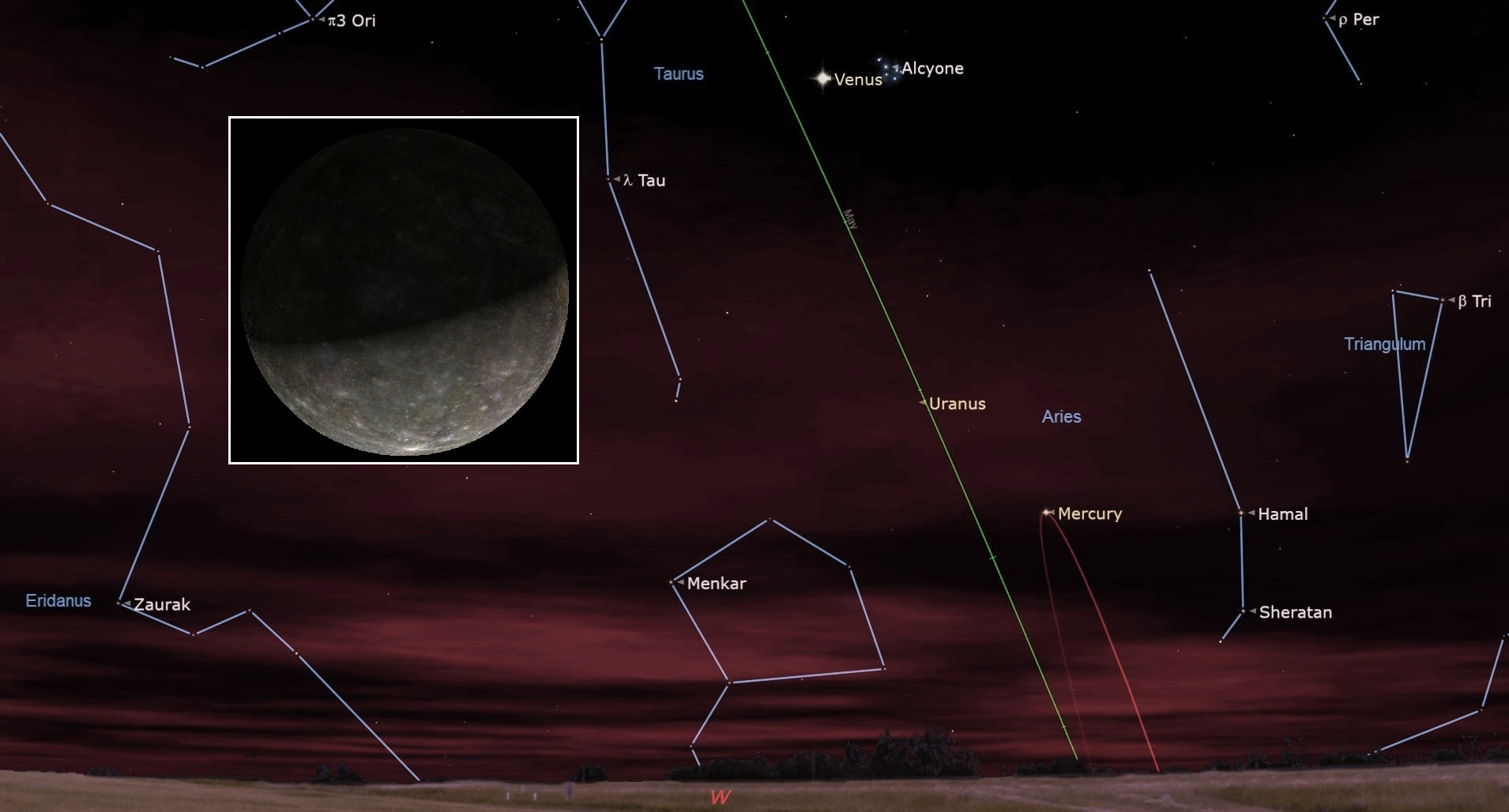See elusive planet Mercury high in the sky tonight (April 11)
It'll still be tough to spot, however.

Mercury will reach its highest point in the evening sky tonight (April 11), with the closest planet to the sun shining brightly.
Mercury will climb to an altitude of 17 degrees over the western horizon at around sunset, according to In the Sky. Tonight also marks the planet's greatest separation from the sun in the night sky — an arrangement that astronomers call the "greatest elongation" — for its March to April evening apparition. (Your clenched fist held at arm's length measures about 10 degrees.)
During its high ascent over Earth, Mercury will be shining at a magnitude of -0.0, according to In the Sky. That's quite bright for the little planet, though it will still be tough to see. Skywatchers should make an effort, however, for good chances to see Mercury aren't terribly common; because Mercury's orbit brings the planet close to the sun, it is normally lost in the glare from our star.
Related: Mercury: Facts about the closest planet to the sun

Looking for a telescope to observe double stars in the night sky? We recommend the Celestron Astro Fi 102 as the top pick in our best beginner's telescope guide. Don't forget a moon filter!
Mercury will be in the constellation of Aries tonight. It will rise at 6:59 a.m. EDT (1059 GMT) and set at 9:12 p.m. EDT (0112 GMT on April 12), according to In the Sky.
Mercury's apparitions, the periods during which it is visible in the sky, occur roughly once every three to four months. These periods of visibility alternate between mornings and evenings, depending on what side of the sun Mercury is on relative to Earth.
If the planet is on the east side of our star, it rises and sets just after the sun, meaning it is visible in early evenings and during twilight — an evening apparition. When Mercury is to the west of the sun, it rises and sets before the star and is visible shortly before sunrise — a morning apparition.
Breaking space news, the latest updates on rocket launches, skywatching events and more!
Viewing details vary from apparition to apparition. For example, the height to which Mercury climbs over New York City, varies between 9 degrees and 21 degrees at sunset during evening apparitions, according to In the Sky. This depends on the time of year and is the result of Mercury crossing an imaginary line in the sky called the ecliptic, which marks the path Earth and the other major planets take through the sky and past the constellations of the zodiac.
The separation between the sun and Mercury during periods of greatest elongation is along the ecliptic. At different times of the year, however, the sun's path through the sky meets the horizon at different angles during sunset. This results in Mercury appearing at different attitudes over the horizon.
Around the time of the Northern Hemisphere's spring equinox, for instance, the ecliptic is at its steepest angle to the horizon, according to In the Sky. This means that Mercury appears high over the horizon even if it is actually close to the sun, in terms of its orbit through the solar system.
The seasons are different in the Southern Hemisphere, so, while March and April are good times to spot Mercury in the north, it's actually not that visible in the south. Mercury will be most prominent in the Southern Hemisphere when that portion of the globe approaches its spring equinox in September.
If you're hoping to catch a look at Mercury ,our guides to the best telescopes and best binoculars are a great place to start. If you're looking to snap photos of the night sky in general, check out our guide on how to photograph the moon, as well as our best cameras for astrophotography and best lenses for astrophotography.
Editor's Note: If you snap an image of Mercury and would like to share it with Space.com's readers, send your photo(s), comments, and your name and location to spacephotos@space.com.
Follow us on Twitter @Spacedotcom and on Facebook.

Robert Lea is a science journalist in the U.K. whose articles have been published in Physics World, New Scientist, Astronomy Magazine, All About Space, Newsweek and ZME Science. He also writes about science communication for Elsevier and the European Journal of Physics. Rob holds a bachelor of science degree in physics and astronomy from the U.K.’s Open University. Follow him on Twitter @sciencef1rst.
